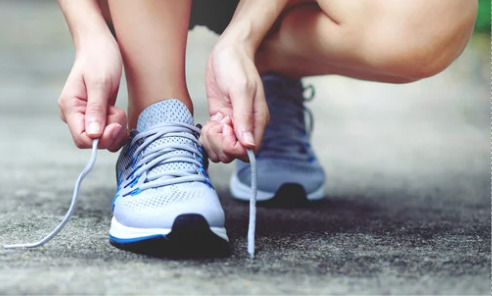The Bare Truth: To Shoe or Not to Shoe?
Wearing shoes is about more than just comfort. They are recommended over walking barefoot at home to prevent injuries even splinters and foreign bodies keeping our feet in tip shape. People with foot conditions such as plantar fasciitis or back problems and chronic conditions like diabetes, wearing the right shoes is a serious business.
Choosing the best shoe to support our feet isn’t always clear-cut. You might wonder, ‘What type of shoes is best? What type of supports are necessary?’
TOP TIP : the first thing we recommend in any of our back pain patient clients is to: please wear a pair of supportive trainers which depend on your foot shape.
As a huge generalisation New Balance in a ‘flat’ arch and an Asics in a ‘high’ arch. Although this is not necessarily the case in each flat or high arched foot type.
Walking barefoot on hard surfaces for an extended amount of time is bad for our feet because it allows the foot to collapse, which, can lead to a tremendous amount of stress not only to the foot but to the rest of the body.
Part of the job of shoes is to absorb impact as we walk, but bad shoes (or no shoes) can throw the whole body out of alignment. If shoes don’t have enough padding or don’t allow for an even stride, eventually pain is an almost inevitable side effect.
Benefits of wearing shoes
- Foot Protection: Shoes provide a protective barrier for your feet, guarding them against sharp objects, extreme temperatures and potentially harmful surfaces. This protection is essential in preventing injuries.
- Support and Stability: Properly fitted shoes offer support to the arches, heels and ankles. They help in maintaining proper alignment of the feet, reducing strain on muscles and joints. This is particularly important for individuals with conditions like flat feet or plantar fasciitis.
- Prevention of Foot Problems: Well-designed shoes can prevent common foot problems like calluses, corns and blisters. They can also help in preventing more serious issues like bunions or hammertoes by providing proper support and reducing friction.
- Promotes Healthy Posture: Shoes with proper arch support can help maintain good posture. Correct alignment of the feet can have a positive effect on the alignment of the entire body, reducing strain on the back and neck.
- Improved Performance: In various sports and physical activities, wearing specialized shoes designed for that activity can enhance performance. For example, running shoes are designed to provide forward motion, while basketball shoes offer ankle support for quick lateral movements.
- Hygiene: Shoes protect your feet from dirt, dust and harmful microorganisms present on the ground, reducing the risk of infections and skin conditions.
- Cushioning: Shoes, especially athletic and sports shoes, come with cushioning that absorbs shock during activities like walking, running or jumping. This cushioning reduces the impact on joints and prevents injuries.
Fun Fact: Historically, shoes were not made with a distinct left or right foot until the 19th century. People wore ‘straights’ shoes that could be worn on either foot, until the concept of left and right shoes was introduced for a better fit.
It’s important to note that the benefits of wearing shoes greatly depend on the type of shoe and its fit. Ill-fitted or inappropriate footwear can lead to discomfort, pain and foot problems. Consulting with a podiatrist or a shoe specialist can help in choosing the right footwear for individual needs.
Are you suffering from any nail condition? At The Chelsea Clinic, we can help. One of our podiatrist can assist and then recommend what treatments are best to get you back on track. Podiatrist South Kensington
Schedule an appointment here or you may call us at +44 (0) 207 101 4000.
We hope you have a feetastic day!
-The Chelsea Clinic and Team




